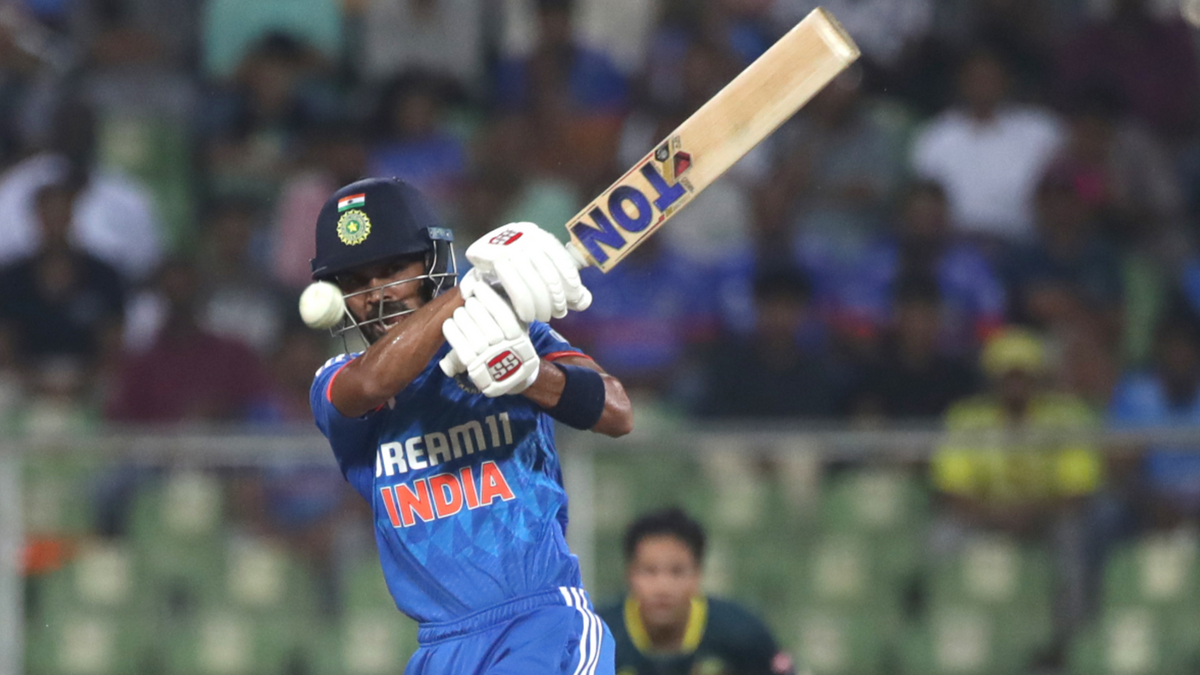
Was Ruturaj Gaikwad’s half-century v Australia a help or a hindrance? Ben Gardner investigates.
Given that he was run out without facing in the first T20I, and given how hard-won chances are in any India side, even a second-string one, it’s understandable that Ruturaj Gaikwad wanted to make sure in the second T20I against Australia.
He registered a half-century – his fourth international cricket – but, with competition this tough, and T20 cricket having advanced in recent years, it’s not just milestones that matter anymore.
That Gaikwad is vice-captain of this side and led India at the Asian Games is an indicator of his rising stature. But India have so rarely had a full complement to call on that nothing can be taken for granted.
As India racked up 235-4, with the rest of India’s lineup scoring at at least 160, you could hear the grumbles begin to be raised at Gaikwad’s 43-ball 58, a strike rate of 134.88.
India’s total is big enough that it should not matter, but given how keen they are to push the margins of what’s possible, could Gaikwad have done more? Or is it possible, in fact, that the opposite is true, that India scored 235 because of, rather than in spite of Gaikwad’s innings.
Let’s examine it from a few angles. First, it’s worth pointing out that not all slower innings are created equal. The batter who scores a single every ball and the batter who faces five dots and then hits a six are each scoring at a run a ball, but the former is allowing his partner much greater opportunity to affect the scoring rate.
[breakout id=”0″][/breakout]
Gaikwad’s innings sits more in the former category. He hit three fours and two sixes in his innings, meaning he made 34 off 38 non-boundary balls. Gaikwad has developed his game to become a faster scorer in recent IPL seasons, but seemed to make a conscious decision here to play the foil to his free-lowing partners, rather than match them stroke for stroke.
The effect of this is clear in how little of the strike he occupied. Gaikwad was out in the 20th over, but only faced 43 deliveries – just over 35 percent of the balls faced while he was at the crease. He might not have exploded, but he never got stuck either.
Another criticism of ‘anchors’, as they are often known, is that they eat up balls early on in the powerplay, when scoring should be at its easiest. However, while Gaikwad did face three of his seven dot balls in the powerplay, he still ended it with a strike rate of 150, notching 15 off 10 as Yashasvi Jaiswal went ballistic at the other end.
Three dots in the first over after the powerplay might be a small black mark, but that’s also hardly out of the ordinary, especially having lost a wicket just before the field went out. And from over seven until he was dismissed, he faced just one more dot ball.
The final criticism of anchors is that they go too late, having taken their time to get set, and it’s true that Gaikwad managed just one six between the end of the powerplay and the start of the final over, at which point he hit a six and then got out. But he also had very little of the strike at the death, facing just five balls from the end of the 15th to the start of the 20th over.
An element of caution is also justified by India’s shallow batting order, with Ravi Bishnoi, a proper tail-ender, carded to come in at No.8.
Gaikwad’s wasn’t the star showing, but it was an innings that allowed the rest of India’s ball-strikers full opportunity to flourish, while also giving them the security that if they did fall, a set batter would be there to carry on their work. He had a role, and he played it well.








